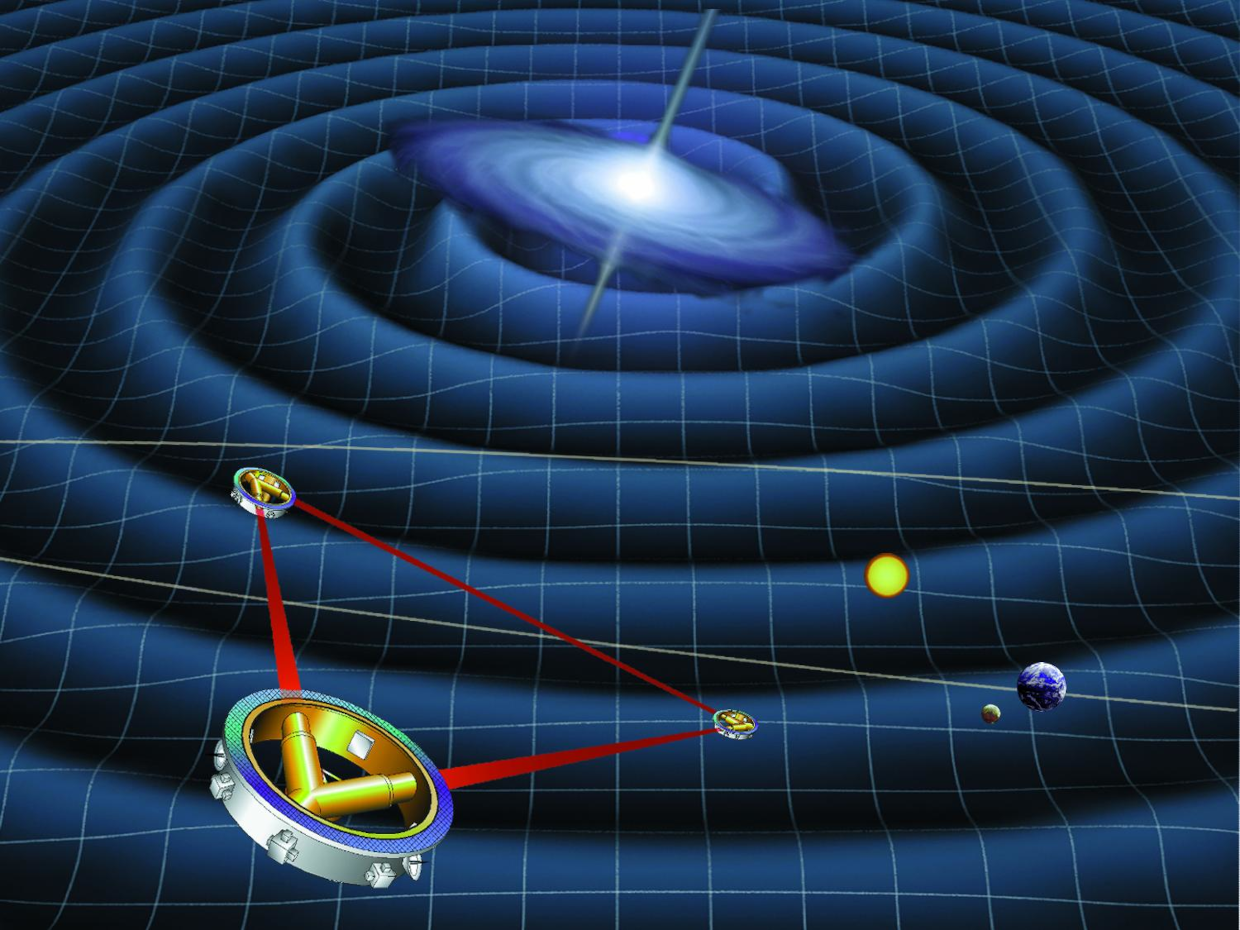LISA Waves

The LISA (Laser Interferometer Space Antenna) mission is a groundbreaking project by the European Space Agency (ESA) designed to detect gravitational waves from space. Using three spacecraft, LISA will measure ripples in space-time caused by events like merging black holes, helping scientists better understand the universe.
The three spacecraft will orbit the Sun in a triangular formation, 20° behind Earth, with each side of the triangle spanning 2.5 million km. These spacecraft will move in a stable orbit around the Sun to minimize disturbances and keep the triangle shape intact. The spacecraft are designed to protect the sensitive test masses inside, which are free-falling and shielded from external forces like solar wind.
Are you interested in this topic?
At the University of Zurich, several researchers are actively studying galaxies and cosmology. See how the Astroparticle Physics group at the Institute for Physics is contributing to our understanding of black holes and gravitational waves.
Are you a student that wants to learn more about this topic? Consider enrolling in these courses:
AST 241: Introduction to Astrophysics (Fall Semesters)
AST 245: Computational Astrophysics (Fall Semesters)
AST 293: Proseminar Cosmology (Fall Semesters)
PHY 473: Introduction to Astroparticle Physics and Cosmology (Fall Semesters)
AST 511: General Relativity (Fall Semesters)
AST 512: Theoretical Astrophysics (Fall Semesters)